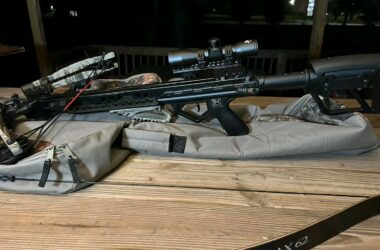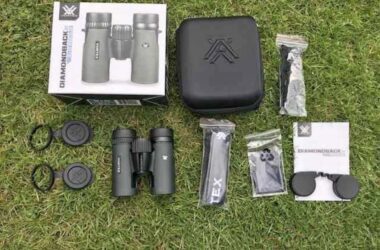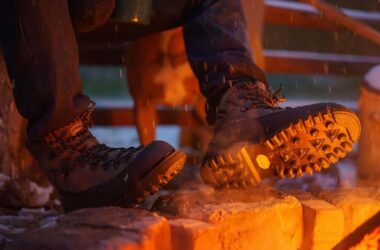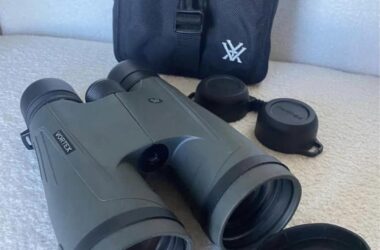It has long been the custom to use arrows with broadheads, but I recently saw some ancient bows at a museum with stone heads. The principal reason for using these heads is that they are sharper and penetrate more deeply, whereas the standard heads tend to glance off unless they hit a bone. These heads were not initially designed for hunting animals, though it may consider that perhaps this was their only purpose since the time of their origin. This paper will cover two general areas; firstly, an analysis of the effect of shape on penetration characteristics of arrowheads, secondly why either tuns or untunes bow would result in different trajectory characteristics, which might include penetration differences.
THE EFFECT OF HEAD SHAPE ON PENETRATION CHARACTERISTICS
The Renaissance bowyer, Sir Richard Burton, in his book “The Book Of The Sword,” has some excellent experiments on the penetration of swords using animal carcasses. He states that swords are tested on pig cadavers since these are primarily subcutaneous fat over a thin muscle layer that corresponds to the human body. He goes on to say that this is misleading because pigs have bones, whereas humans do not. His tests were conducted by thrusting the pig, then withdrawing the sword at various angles and noting where it came out on re-entry. This produced data on how deeply each type of blade penetrated, how many ribs it cut through, whether or not it hit the spine, and whether or not it would cut out.
He then conducted a series of tests on that section of the carcass, which represented human flesh. The results demonstrate very clearly why swords are made with sharp points at their ends. The sword which penetrated deepest was one with a double-angled tip. It does not cut through ribs until after it has gone well past the rib cage. Three types of blades were tested side by side. One was flat-sided both in profile and cross-section. The second had three angles in an isosceles triangle allowing for two right-angle faces unconnected to any others. Finally, there was a blade similar to the third but with the tip slightly pinched inwards so that it was somewhat pointed. In all cases, the greater the tip angle as it approached the cutting edge, the more penetration was restricted.
THE EFFECT OF HEAD SHAPE ON TRAJECTORY CHARACTERISTICS
Bowyers often debate about the shape and weight distribution, but this is a challenging area with no final answers which apply to every case. The problem is that a slight change in weight or shape can yield a significant difference in performance, and this is just as likely to be unpredictable as not. For example, although many have tried over many years, I am unaware of anyone having tested arrowheads at full draw from a fixed height before firing them into elk carcasses. This might be an artificial test since most hunters will only shoot at very restricted angles, most less than 30 degrees. However, most penetration occurs within this range of tips.
The following points are not intended to be general rules applicable to all arrow designs, but they are likely to be valid in most cases. The flat-sided head penetrates deeper since the edges push aside the tissues with minimum pressure loss, which requires energy. This is probably why most hunters using broadheads have opted for heads with flat sides or squared-off shoulders since these blades usually go deepest into the carcass with the least resistance. Barring bone, if conical heads penetrate just as profoundly, there is no reason for them not being used. Pointed metal blades are likely to work best against flesh and not bone since they will tend to deflect off any hard surface.
An arrowhead with asymmetrical cross-section such as the barbed broadheads is likely to penetrate no more deeply than one with a flat-sided blade of similar weight even when both blades weigh the same. If the blades are not of equal importance, then penetration can be expected to be greater in favor of that heavier head. However, if the two heads do not have identical momentum and energy at impact, then penetration is simply unpredictable. The finer sharp herringbone broadheads might perform better than most other types in wet conditions because their function relies on slicing rather than punching through tissues. These points naturally require more kinetic energy upfront for them to begin turning. To date, no tests have been carried out to prove or disprove this theory, but it seems reasonable in principle. Some heads will require more energy to begin cutting since they are either long and narrow, e.g., the wasp waist broadheads, short with large shoulders, e.g., the laminated points because their shape causes an increase in pressure loss near the point, e.g., barbed blades of all types (including the ‘Fulwood’). Arrows equipped with these head types can expect to penetrate less intensely than those shot from bows fitted with blades that slice effectively without requiring excessive kinetic fist upfront, such as the herringbones.
Alternatives to herringbone broadheads include the ‘Fulwood’, which has become a cult item of late. This blade is quite different to most others in that its function depends on the point being driven into tissues before it begins cutting. It is thus essential not to get the full-width of the blades flush with flesh, or they are likely to wedge. The Fulwood’s shape makes it more efficient at slicing than punching, this type of head is best suited for lighter weight arrows where momentum and energy are less critical. Another alternative would be light barbed heads such as the JCO design currently made by Mountain Man in the USA and AiT in New Zealand. These heads can suffer from poor penetration due to their small size and lack of mass than broadheads with more oversized shoulders.
The penetration potential of blades with square shoulders (e.g. ‘Jink’ heads) is not well understood at this time. These heads offer the same penetration potential as other types since they don’t seem related to their weight against similar length shank-and-wire broadheads. This type of head requires more kinetic energy upfront than its herringbone alternatives due to its rounded edges, which cause more pressure loss during penetration, thus making them less efficient than flat-sided blades for punching through tissues. However, these blades are likely to penetrate better than most others when shot from bows with lower draw weights. This is because they require little fist upfront, which allows momentum and energy levels to remain high throughout the arrow’s penetration path. These blades are well suited to bows with shorter draw lengths and low energy outputs because their design helps make the most of the bow’s potential. Square shoulder blades are generally favored by those using light recurves or longbows, but this is more likely due to these types of bows being employed purely for flight shooting where momentum does not play a great role in arrow stability during its flight, rather than because these heads are necessarily better at penetrating.
For carbon arrows, metal fletchings significantly increase drag, reducing penetration if they have any degree of leading ability. Fletches should ideally be made from feathers since plastic vanes only tend to cause problems when shot from high-speed bows with large amounts of kinetic fists upfront. When shot from bows with moderate kinetic fist upfront, the relative lack of any leading ability due to modern fletch materials produces more drag on the shaft than metal vanes. Thus they offer less penetration potential. The most excellent level of drag is produced by broadheads equipped with short plastic vanes, medium-long metallic vanes, or barbed blades.
Broadheads which cut plenty of tissue are more likely to deflect during penetration than those which punch through tissues cleanly. This type of head requires a high degree of kinetic energy upfront to begin cutting without reducing penetration too much. These heads mustn’t be shot from bows with excessive amounts of a kinetic fist because they will deflect forward into the flight zone and reduce penetration. Broadheads that punch through tissues cleanly can make use of all available energy and thus penetrate more deeply than those which cut tissues because their shape reduces the degree to which they deflect during penetration.
The depth at which a broadhead has embedded itself into tissue (or an animal’s body) appears to be the determining factor in how much spine deflection it will create when shot from a bow. Ahead with its point embedded within an animal’s body tends to cause less deflection than one whose point is resting against surfaces inside the wound channel. This is because the arrow’s center of gravity changes as it transfers its momentum and energy into the arrow and bows via the arrow rest and nocking points, respectively.
Must Read: Samick sage vs Martin Jaguar






